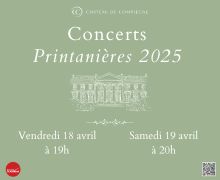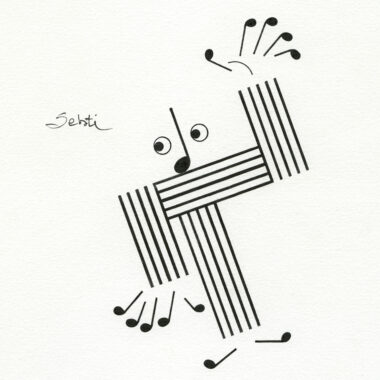Plus de détails
The success of the Folle Journée de Nantes is undeniable. The 19th edition ended with very satisfying results: 145,000 out of 156,000 tickets sold, or 93 percent. Some 1,800 artists were presented in 316 ticketed and 34 free concerts, together with 47 lectures by 20 speakers. The range offered, as usual, was very wide.
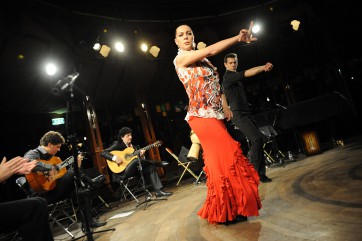 This year, the theme was “L’heure exquise,” celebrating French and Spanish music from 1850 to the present. In that context, a great tribute was paid to the golden era of French music from the 1870s through the 1940s. Along with the most famous composers, such as Debussy, Ravel, Bizet, Albéniz, Falla, and Messiaen, the audience was given the opportunity to discover composers who until now have remained very little known, or even completely unknown, such as Théodore Dubois, Gabriel Dupont, Jean Cras, Mel Bonis, and Cécile Chaminade, among others. It was the same for the performers: masters (Leonard Slatkin, Jean-Claude Pennetier, Jean-François Heisser, Anne Quéffelec, Boris Berzovsky, Marie-Catherine Girod, Pierre Hantaï, Olivier Charlier, Gérard Cuassé, Deszö Ranki) were mixed with younger, or even simply young, performers, whose career has just begun (Fanny Clamagirand, Shani Diluka, Nathanaël Gouin, Matan Porat, Adam Laloum, Etsuko Hirose, David Violi, Raphaël Sévère, Romain Leleu, Kazuki Yamada, the Ardeo Quartet, the George Sand Trio).
This year, the theme was “L’heure exquise,” celebrating French and Spanish music from 1850 to the present. In that context, a great tribute was paid to the golden era of French music from the 1870s through the 1940s. Along with the most famous composers, such as Debussy, Ravel, Bizet, Albéniz, Falla, and Messiaen, the audience was given the opportunity to discover composers who until now have remained very little known, or even completely unknown, such as Théodore Dubois, Gabriel Dupont, Jean Cras, Mel Bonis, and Cécile Chaminade, among others. It was the same for the performers: masters (Leonard Slatkin, Jean-Claude Pennetier, Jean-François Heisser, Anne Quéffelec, Boris Berzovsky, Marie-Catherine Girod, Pierre Hantaï, Olivier Charlier, Gérard Cuassé, Deszö Ranki) were mixed with younger, or even simply young, performers, whose career has just begun (Fanny Clamagirand, Shani Diluka, Nathanaël Gouin, Matan Porat, Adam Laloum, Etsuko Hirose, David Violi, Raphaël Sévère, Romain Leleu, Kazuki Yamada, the Ardeo Quartet, the George Sand Trio).
As for Spanish music, there were some nice finds too, especially in works for guitar: Joaquín Rodrigo’s Concierto Andaluz for four guitars, works by Miguel Llobet, Francisco Tárrega, Agustín Barrios, and others. In addition to the Concierto Andaluz, the Concierto de Aranjuez, and a show entitled Cuerdas del Alma, which included dance (with a sextet of guitars, percussion, bass, and singers), Juan Manuel Canizarès also played a recital of his own flamenco compositions.
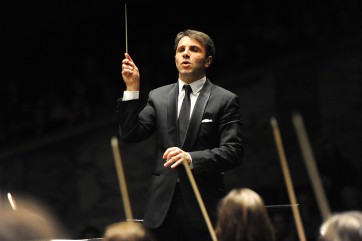 The quality of the Orchestre Lamoureux under the baton of Fayçal Karoui (in, among other things, the closing concert, and especially in Ravel’s Concerto in G, featuring Bertrand Chamayou, and Geronimo Gimenez’s La Boda de Luis Alonso with the surprising Lucera Tena on the castanets) and of the Lyon National Orchestra, conducted by Leonard Slatkin (in an all-Ravel program) is obvious. At their side, the Yokohama Sinfonietta, conducted by Kazuki Yamada (who won the fifty-first International Besançon Competition for Young Conductors in 2009) set the audience on fire with a nice interpretation of Darius Milhaud’s The Ox on the Roof. The singer Antonia Contreras pulled the audience into an atmosphere of flamenco in Manuel de Falla’s El amor brujo, with the excellent Orchestre de Poitou-Charentes, under the baton of Jean-François Heisser and Marie-Josèphe Jude at the piano. Nora Gubisch “told” us Ravel’s Nature Stories and sang De Falla’s Chansons Populaires Espagnoles with her collaborator Alain Altinoglu at the piano. Omo Bello, a soprano of Nigerian descent, together with the French tenor Florian Laconi, were wonderfully expressive in extracts from Gounod’s Roméo et Juliette (with the Orchestre Symphonique Région Centre-Tours, conducted by Jean-Yves Ossonce). Omo Bello’s beautiful, powerful, gleaming voice, supported by her impeccable technique, vied with the even more powerful voice of Florian Laconi, whose tone is very clear and sensual. The result was exceptionally passionate. Two names to remember.
The quality of the Orchestre Lamoureux under the baton of Fayçal Karoui (in, among other things, the closing concert, and especially in Ravel’s Concerto in G, featuring Bertrand Chamayou, and Geronimo Gimenez’s La Boda de Luis Alonso with the surprising Lucera Tena on the castanets) and of the Lyon National Orchestra, conducted by Leonard Slatkin (in an all-Ravel program) is obvious. At their side, the Yokohama Sinfonietta, conducted by Kazuki Yamada (who won the fifty-first International Besançon Competition for Young Conductors in 2009) set the audience on fire with a nice interpretation of Darius Milhaud’s The Ox on the Roof. The singer Antonia Contreras pulled the audience into an atmosphere of flamenco in Manuel de Falla’s El amor brujo, with the excellent Orchestre de Poitou-Charentes, under the baton of Jean-François Heisser and Marie-Josèphe Jude at the piano. Nora Gubisch “told” us Ravel’s Nature Stories and sang De Falla’s Chansons Populaires Espagnoles with her collaborator Alain Altinoglu at the piano. Omo Bello, a soprano of Nigerian descent, together with the French tenor Florian Laconi, were wonderfully expressive in extracts from Gounod’s Roméo et Juliette (with the Orchestre Symphonique Région Centre-Tours, conducted by Jean-Yves Ossonce). Omo Bello’s beautiful, powerful, gleaming voice, supported by her impeccable technique, vied with the even more powerful voice of Florian Laconi, whose tone is very clear and sensual. The result was exceptionally passionate. Two names to remember.
On the chamber music side, some concerts that included rarities deserve to be mentioned: the Cuarteto Arriaga, in collaboration with pianist Luis Fernando Pérez and bass player Pénélope Poincheval, played Joaquín Turina’s Piano Quintet, op. 67, and Enrique Granados’s Piano Sextet, op. 49; Hurel (flute), Charlier (violin), da Silva (viola), Demarquette (cello) and Moretti (harp) performed Jean Cras’s Quintet; the Quatuor Ardeo and the pianist David Violi gave us Théodore Dubois’s and Reynaldo Hahn’s Piano Quintet and some works for piano solo by Déodat de Séverac and Mel Bonis.
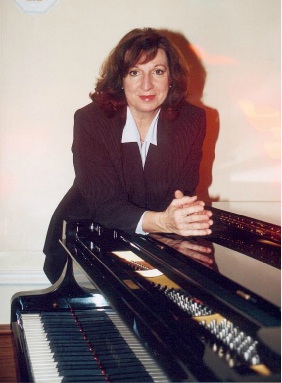 At the piano, in a particularly rich program, Marie-Catherine Girod especially deserves to be mentioned: she has mastered a very wide range of rare works by composers, most of them quite unknown. She played, with astonishing skill, Ernest Chausson’s Quelques Dances, op. 26, Louis Aubert’s Sillage op. 27, and Henri Dutilleux’s Sonate, op. 1. Jean Dubé played beautiful programs limpidly and with great expression including works by Cécile Chaminade, such as the Etude de Concert “L’Automne,” op. 35/2 and the Toccata, op. 39; two Waltzes by Jules Massenet (« Très lente, » and « Folle »), extracts from Mel Bonis’s Femmes de Légende, notably “Omphale,” and Jean Cras’s Paysage Maritime. François Chaplin played with subtle delicacy works by Debussy in a lecture-concert, along with a reading of “Debussy, Degas, and Mallarmé” by Jean-Michel Nectoux, an important Debussy specialist. Finally, Anne Queffélec gave a recital entitled “Satie and Co.” on five occasions, transporting her audience to the late nineteenth century both with her commentary and her playing of shorter works by Poulenc, Déodat de Séverac, Pierre-Octave Ferroud, Reynaldo Hahn, Gabriel Dupont, Charles Koechlin, Florent Schmitt, and others.
At the piano, in a particularly rich program, Marie-Catherine Girod especially deserves to be mentioned: she has mastered a very wide range of rare works by composers, most of them quite unknown. She played, with astonishing skill, Ernest Chausson’s Quelques Dances, op. 26, Louis Aubert’s Sillage op. 27, and Henri Dutilleux’s Sonate, op. 1. Jean Dubé played beautiful programs limpidly and with great expression including works by Cécile Chaminade, such as the Etude de Concert “L’Automne,” op. 35/2 and the Toccata, op. 39; two Waltzes by Jules Massenet (« Très lente, » and « Folle »), extracts from Mel Bonis’s Femmes de Légende, notably “Omphale,” and Jean Cras’s Paysage Maritime. François Chaplin played with subtle delicacy works by Debussy in a lecture-concert, along with a reading of “Debussy, Degas, and Mallarmé” by Jean-Michel Nectoux, an important Debussy specialist. Finally, Anne Queffélec gave a recital entitled “Satie and Co.” on five occasions, transporting her audience to the late nineteenth century both with her commentary and her playing of shorter works by Poulenc, Déodat de Séverac, Pierre-Octave Ferroud, Reynaldo Hahn, Gabriel Dupont, Charles Koechlin, Florent Schmitt, and others.
Next year, the twentieth anniversary of the Folle Journée will be celebrated with American music from the twentieth century, including works by American composers but also works by composers from other countries created in America, along with jazz and musicals. Here’s hoping to another great success.
Plus de détails
The success of the Folle Journée de Nantes is undeniable. The 19th edition ended with very satisfying results: 145,000 out of 156,000 tickets sold, or 93 percent. Some 1,800 artists were presented in 316 ticketed and 34 free concerts, together with 47 lectures by 20 speakers. The range offered, as usual, was very wide.





